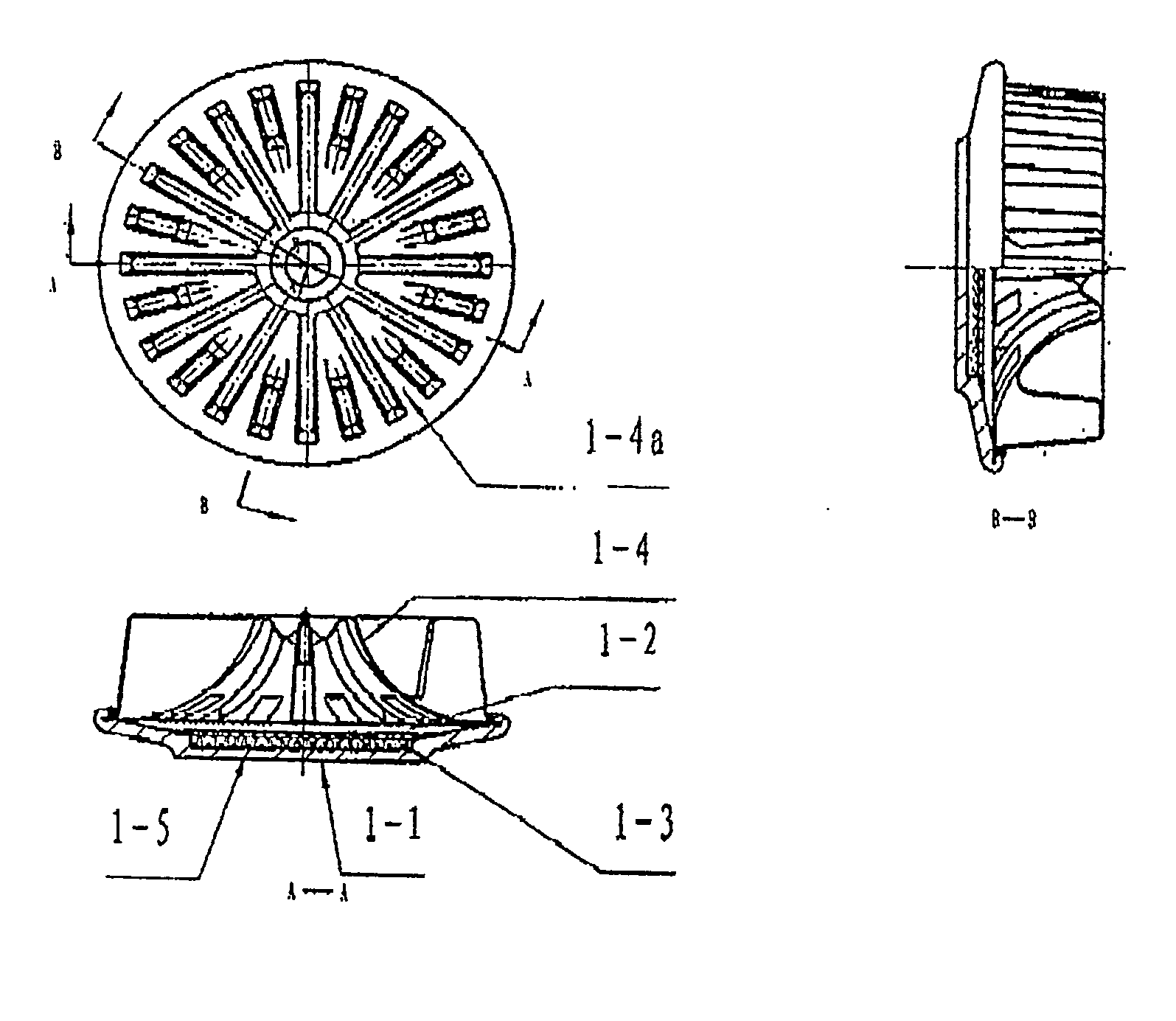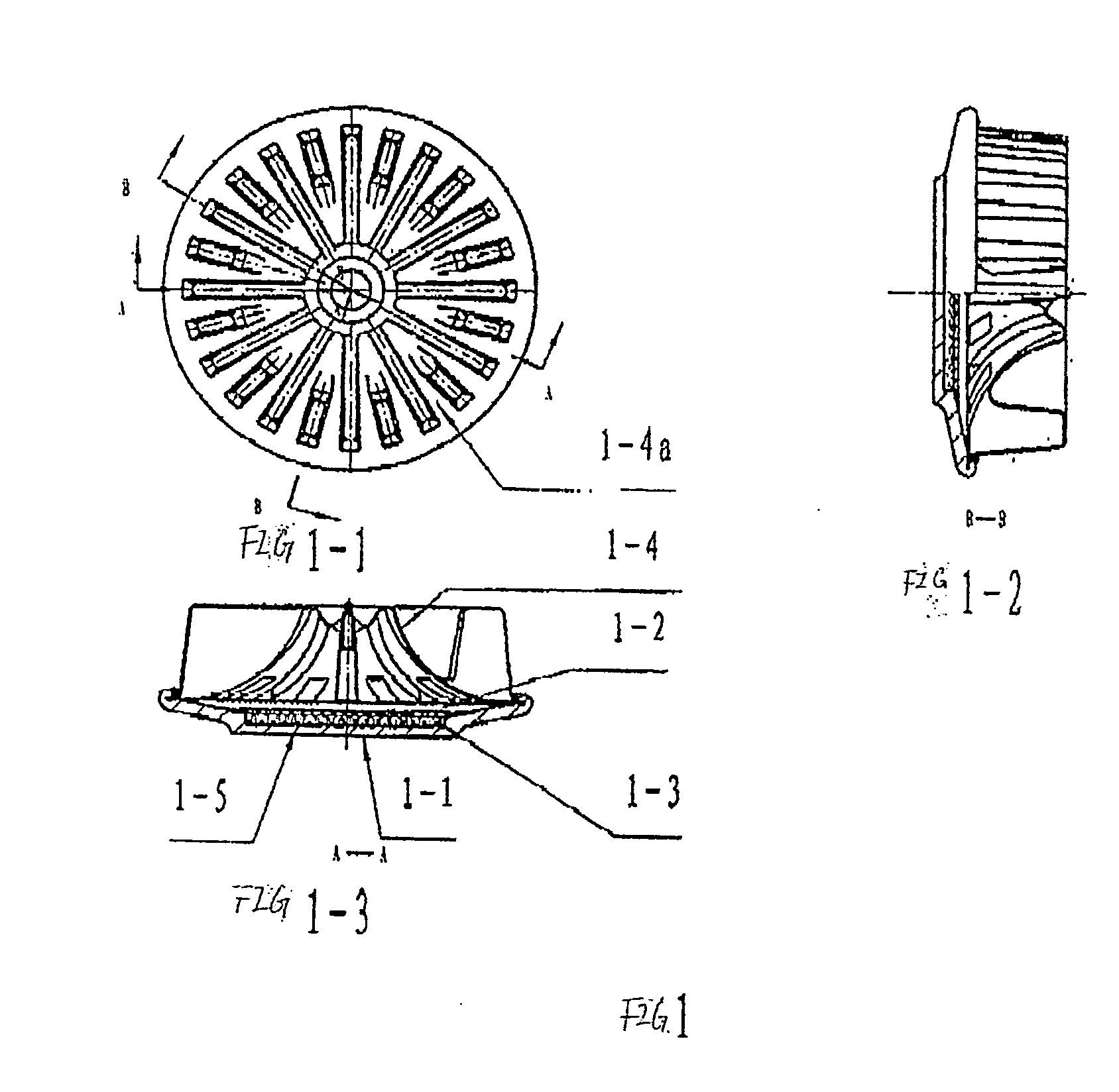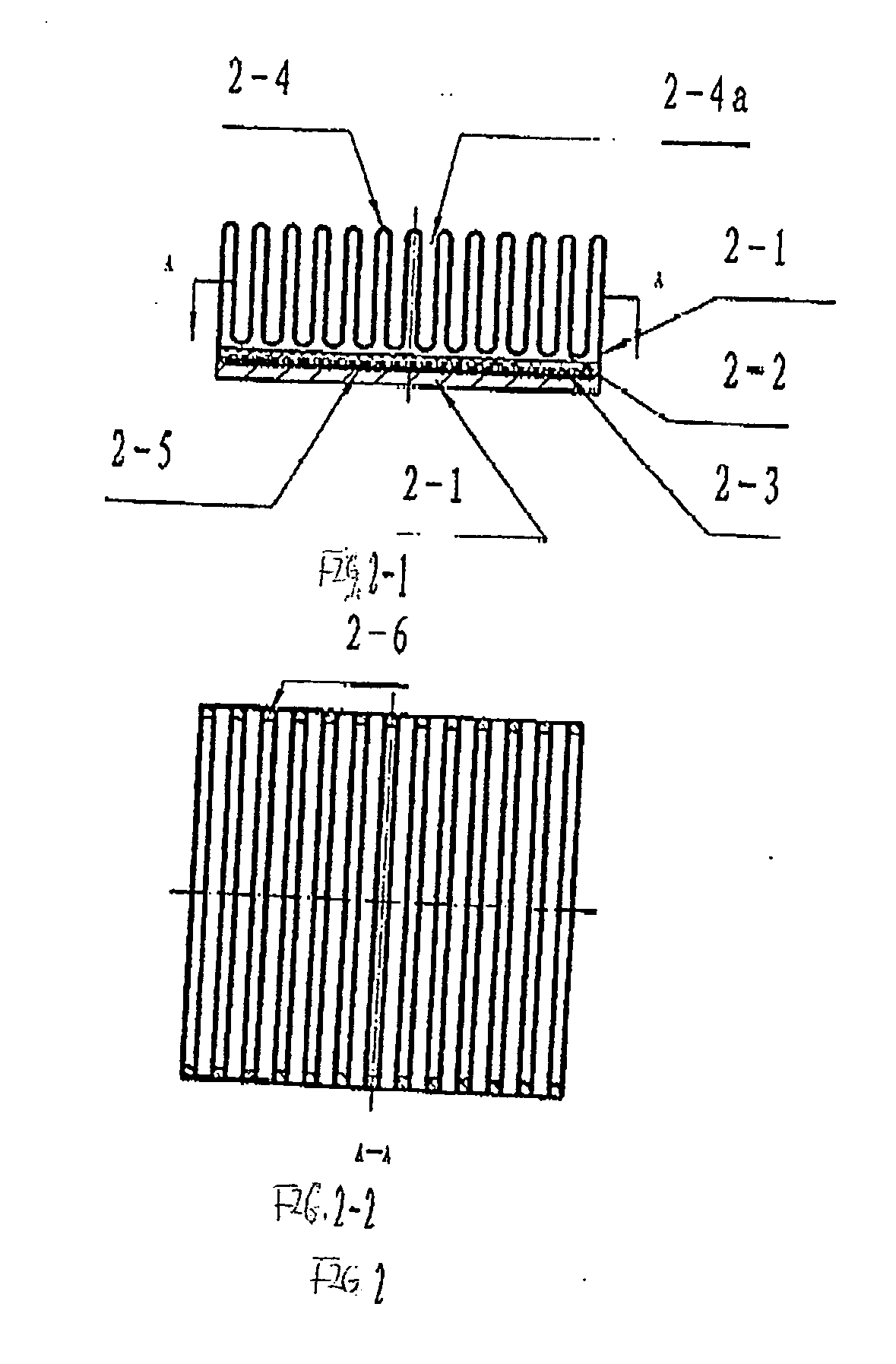Integrated heat pipe and its method of heat exchange
a heat exchange pipe and heat exchange technology, applied in indirect heat exchangers, lighting and heating apparatus, stationary conduit assemblies, etc., can solve the problems of poor heat elimination effect, low cost, and major problems of heat elimination, and achieve the effect of increasing heat transfer efficiency
- Summary
- Abstract
- Description
- Claims
- Application Information
AI Technical Summary
Benefits of technology
Problems solved by technology
Method used
Image
Examples
application example 1
[0080] As shown in FIG. 1, Application Example 1 is a kind of heat pipe applicable to integrated heat pipe coolers with an in-line finned structure for cooling CPU of computers, express cards, high-power power electronic components.
[0081] It is a kind of integrated heat pipe composed of a shell 1-1 with an enclosed chamber 1-2, featuring a heat carrier on the outer side of the enclosed vacuum chamber; the heat carrier 1-4 has a thin-wall fluid passage 1-4a with radial in-line distribution of 12 long fins and 12 fins matching with the axis of the heat pipe, the inner side of each group of long fin and short fin is the internal chamber of the heat carrier 14, and is connected with the vacuum chamber 1-2 and the extension to the vacuum chamber 1-2; the outer side of each long fin and short fin is cooling surface of the fluid passage 1-4a of the heat carrier 1-4, which contacts with the cool fluid; each group of the heat carrier shares an enclosed chamber 1-2 and the heat transfer medi...
application example 2
[0084] As shown in FIG. 2, Application Example 2 is a kind of integrated heat pipe applicable to integrated heat pipe coolers with an in-line finned structure for cooling CPU of computers, or high-power power electronic components.
[0085] It is a kind of integrated heat pipe composed of a shell 2-1 with an enclosed chamber 2-2 that is vacuumed to fill in a heat transfer medium 2-3. It features a heat carrier 2-4 on the outer side of the vacuum chamber 2-2; The heat carrier 2-4 has a fluid passage 2-4a structure with parallel array of 13 groups of finned thin-wall fluid passage 2-4a from heat-in of the shell to its opposite end; the internal side of each group of finned thin-wall fluid passage 2-4a is the inner chamber of the heat carrier and is connected with the enclosed vacuum chamber 2-2 and an extension to the enclosed vacuum chamber 2-2; the outer side of each group of finned thin wall fluid passage 2-4a is the cooling surface of the heat carrier 2-4, which contacts with the co...
application example 3
[0088] As shown in FIG. 3, Application Example 3 is a kind of heat pipe applicable to integrated heat pipe coolers with a thin-wall rectangle pipe structure for cooling CPU of computers, or high-power power electronic components.
[0089] It is a kind of integrated heat pipe composed of a shell 3-1 with an enclosed chamber 3-2 that is vacuumed to fill in a heat transfer medium 3-3. It features 11 groups of heat carrier 3-4 in the inner side of the enclosed vacuum chamber 3-2 that is enclosed by the rectangle shell, and the left and right end plates 3-6 of the shell; the heat carrier is a fluid passage 3-4a structure composed of thin-wall pipes with a rectangle cross section and runs through both ends of the end plates 3-6 of the shell; the outer wall of each thin-wall pipe with rectangle cross section constitutes the inner chamber of the heat carrier 3-4 and is connected with the enclosed vacuum chamber 3-2 and inside the enclosed vacuum chamber 3-2; the inner wall of each rectangle t...
PUM
 Login to View More
Login to View More Abstract
Description
Claims
Application Information
 Login to View More
Login to View More - R&D
- Intellectual Property
- Life Sciences
- Materials
- Tech Scout
- Unparalleled Data Quality
- Higher Quality Content
- 60% Fewer Hallucinations
Browse by: Latest US Patents, China's latest patents, Technical Efficacy Thesaurus, Application Domain, Technology Topic, Popular Technical Reports.
© 2025 PatSnap. All rights reserved.Legal|Privacy policy|Modern Slavery Act Transparency Statement|Sitemap|About US| Contact US: help@patsnap.com



